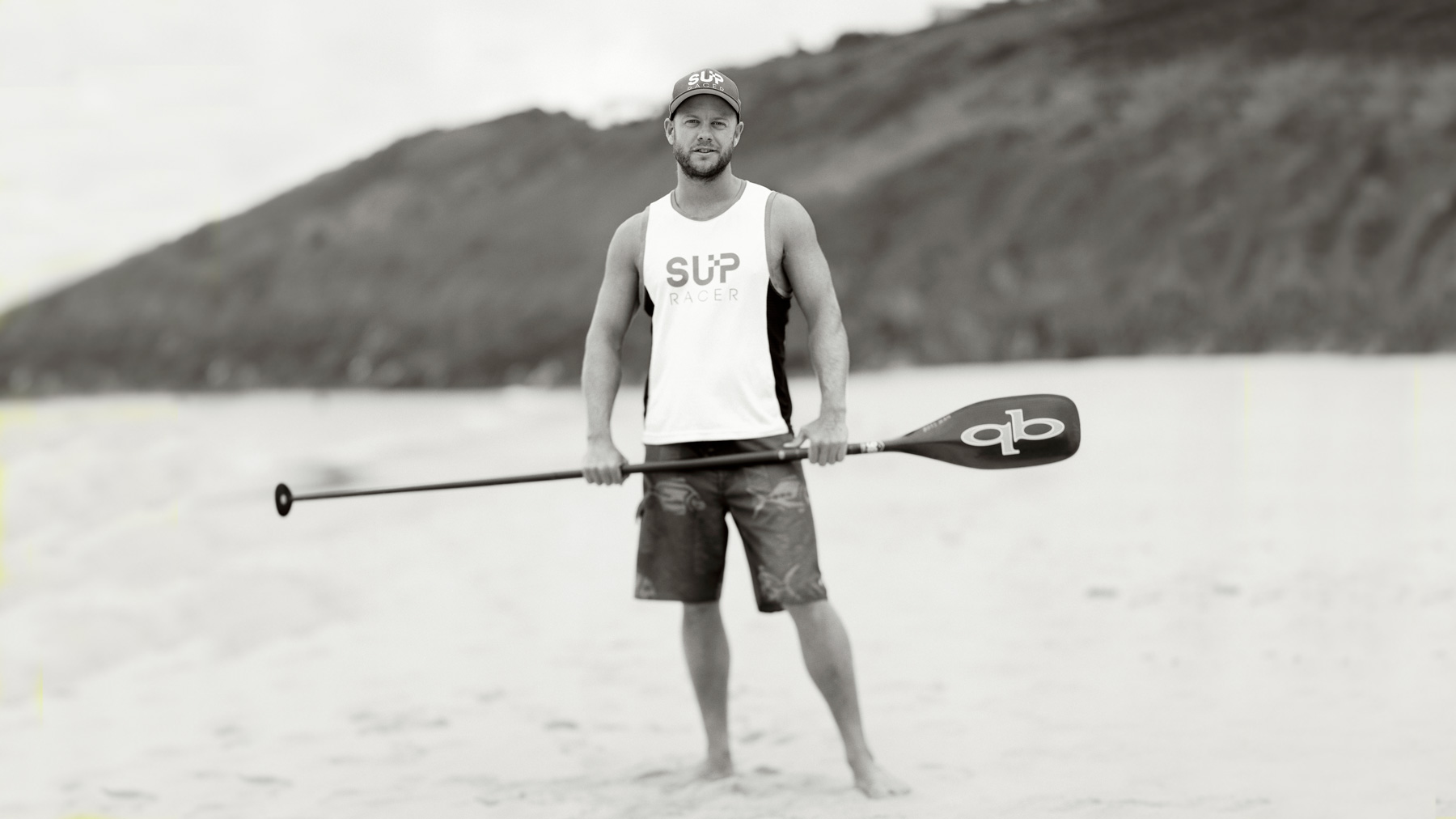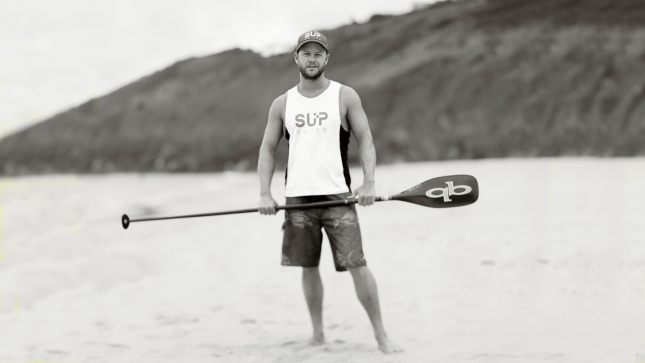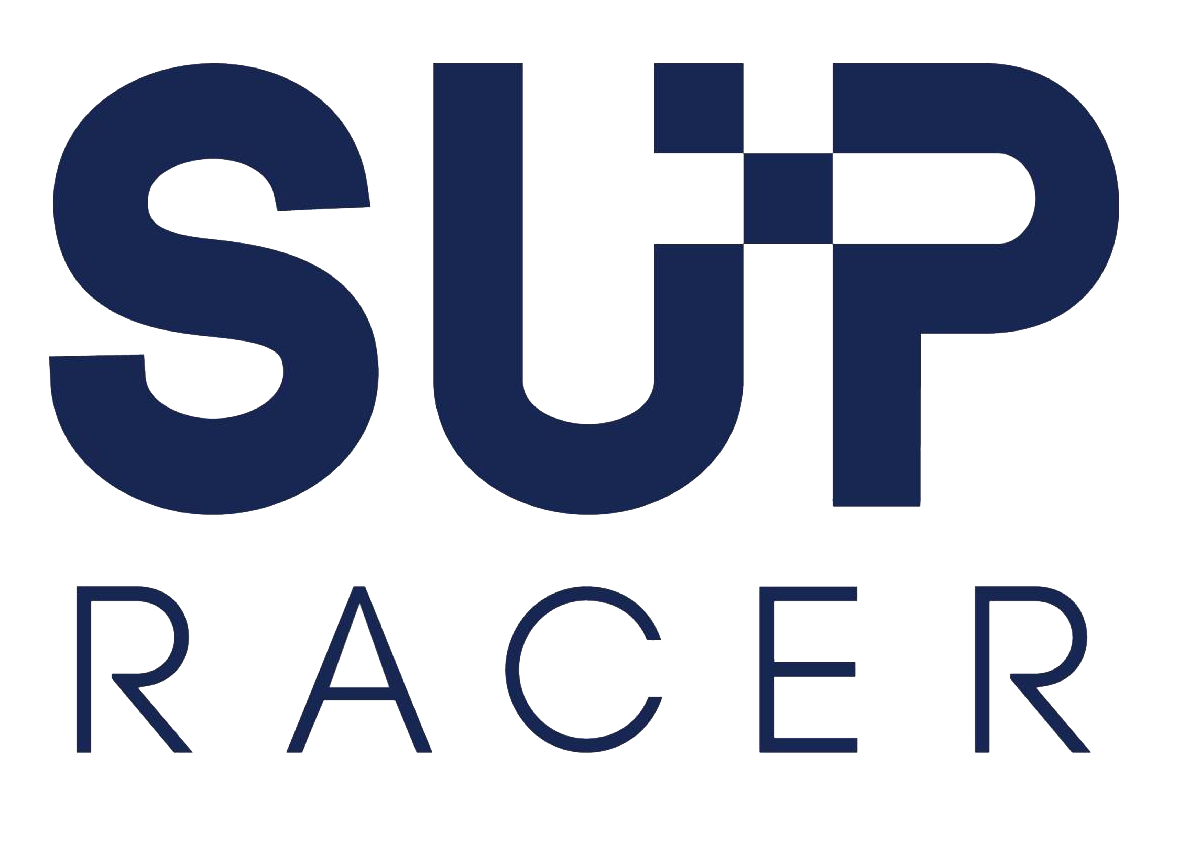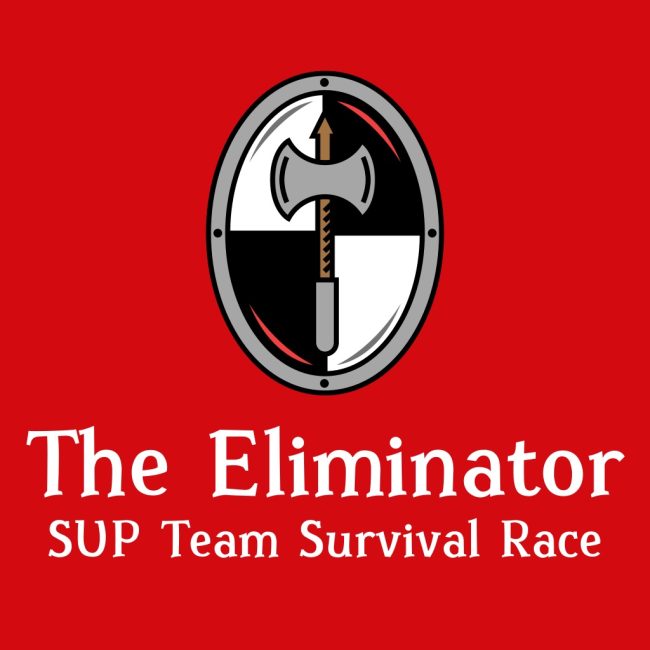
“I’m burnt out.”
[notdevice]
[/notdevice][device] [/device]
It was a sunny Thursday morning in Portugal.
I’d woken up at 5am to write SUP Racer’s morning briefing. At around 8am I hit post, proceeded to share the link on Facebook and promptly shut my laptop. It would be the last time I’d encourage anyone to visit supracer.com in any meaningful way for the next three months.
I started SUP Racer just over seven years ago – December 19, 2011 was the first entry on this blog – and in that time I’ve churned out 2,714 posts that have, hopefully, had a genuine impact on this wonderful and quirky little sport of ours.
That’s an average of just over one news story per day, every day, for seven years straight. Plus thousands more posts and videos directly on Facebook and Instagram.
Those seven years have been one hell of an adventure: Last year alone I spent time in Thailand, Tahiti and Brazil plus 20 other countries. I’ve met thousands of interesting people and paddled some of the most breathtaking locations on earth. All in the name of “work”.
I’ve also forged an influential position in the sport, which has given me an outsized voice and opened countless doors: I get flown round the world to commentate. I’m asked to consult for brands and events. The Prince of Monaco invited me on his royal jet for christ’s sake.
I know that many people would love to do this job, which is exactly what makes this post so hard to write:
I don’t want to do this job anymore. I’m burnt out.
…or rather, I was burnt out and didn’t want to do this job anymore. I should have written this post three months ago but couldn’t articulate exactly what I was feeling at the time.
[notdevice]
[/notdevice][device]
[/device]
When people regularly exclaim “You’re living the dream!” ask “Do you need an intern?!” or say “Jeez, tough life you’ve got…” it produces a conflicting mix of extreme gratitude and intense anxiety.
Yes, I’m pretty damn fortunate, but this job isn’t nearly as carefree as it may seem.
For everything I get to enjoy about this line of work – and there’s a lot – there are plenty of things I don’t.
I don’t show the 4am work hours, the sleeping in airports, the life-in-a-backpack, the 10 months on the road, the strain on relationships (what are those?), the lack of employees (this has always been a one-man show), the 11 hours it takes to update the world rankings database (each week), the politics, the paddletics…
Sometimes you just need a break. But how do you take a holiday when, as some people nicely-but-naïvely tell you, “Your whole life is a holiday!”
Of course, nobody was ever stopping me from taking a break – this post is for myself as much as anyone else – but there’s always been a sense of pressure to grind it out day after day and keep everyone informed or entertained. I’ve always felt a sort of “duty” to the sport that’s given me so much.
I often thrived on that sense of duty and pressure, but other times it simply pushed me away from the sport I love. And that duty/pressure only increased when I co-founded The Paddle League last year to help build a more stable future for stand up paddling.
Having such a fun “job” (and SUP Racer really is my dream job) made it feel like I couldn’t be honest without seeming ungrateful. Over the past couple of years I started feeling guilty for even *thinking* I wanted to take an extended break from the sport let alone doing it.
But the reality is, burn out is becoming increasingly common for people that become their own boss and work online without any traditional sense of work-life balance.
There’s been a steady stream of recent articles about “Burnt Out YouTubers” and the crazy pressure they face to make daily videos or vlogs all while forcing a smile because they’re supposedly living the dream. SUP Racer isn’t on the same level as PewDiePie or Casey Neistat but their honest confessions perfectly sum up what I’ve been feeling for the past two years (in particular the past three months).
The worst part is, this burn out totally undermines something that should actually make me proud: I *have* worked my ass off to get where I am.
[notdevice]
[/notdevice][device]
[/device]
In the first 12 months of SUP Racer I didn’t take a single day off. Not one. I never had an employee to help me (still don’t) and I was working for free the entire year…
In the early days, I never got a cent from a brand nor a free plane ticket from an event. And those work days were often long: I’d regularly stay up all night (or wake up stupidly early) to post results from a race on the other side of the world.
I remember Jamie Mitchell, Travis Grant and Paul & Angie Jackson (four of my heroes that helped kickstart SUP Racer) telling me that during the inaugural ISA Worlds in Peru (February 2012) they’d go back to their hotel and check supracer.com for the results of the race they’d just competed in because I was apparently working harder than the ISA itself. (perhaps some things never change 😉
The reason I posted those results first is because I’d stayed up until 5am watching a blurry webcast and scribbling down finishing times as each pixelated face I recognised crossed the line.
My reward? It wasn’t any form of payment or gratitude, at least not from the powers that be: it was an angry email from the ISA asking why I was “pirating” their live stream by simply embedding the public YouTube link on SUP Racer and sharing their event with a wider audience (ironically, the ISA would start paying me to do the exact same thing a year later).
That episode summed up why I wanted to build SUP Racer: I don’t chase money and couldn’t care less about the self-appointed leaders of our sport, I simply love analysing and participating in stand up paddling and sharing that passion with other true fans.
SUP Racer debuted in December 2011 but the seed was planted six months earlier: By mid-2011 I’d become so obsessed with the world of SUP racing that SUP Racer simply felt like a natural evolution.
It started with a bookmark folder of 87 blogs, Facebook pages and Twitter accounts (remember those?) that I’d routinely sift through to find out what was happening. Tired of sifting, I eventually decided we needed a dedicated race hub. There were already other great blogs out there – Distressed Mullet, SUP Connect and SUP Gladiator (plus the three main print magazines) all preceded SUP Racer – but they were focusing on the whole sport (surfing, yoga, etc). All I cared about was racing, hence the name.
I told myself that supracer.com would be the blog *I* wanted to read every day. That was my founding philosophy and still rings true today. I wanted authenticity not eyeballs. If anyone else wanted to read it with me, great, but I was going to build SUP Racer whether there was an audience or not.
By avoiding the fluff and obsessively focusing on the facts (and results), SUP Racer did attract an audience, one that helped me turn my hobby into a full-time career for which I’ll forever be grateful.
Others helped me out of course. SUP Racer wouldn’t have gotten off the ground without my incredibly-supportive parents or the advice of countless athletes and industry insiders (too many to mention, but apart from the quartet above, Quickblade deserves a special thank you for treating me like family).
But I’m also extremely proud of what I built and contributed to the sport while essentially being a one-man show.
The data-driven World Rankings, the season-long race schedules, the rambling race recaps and those old-school live blogs. It was all largely cobbled together by one guy with an old laptop and a paddle full of passion.
SUP Racer was damn hard work but I felt like I was doing it for the right reasons, which meant it never felt like “work” at all. It felt authentic. It was bloody good fun.
By 2014 the sport was riding high and so was SUP Racer. The industry was in a golden age (read: bubble) where brand managers threw around big marketing budgets and every kid showing a bit of promise got flown to Dana Point.
I occasionally joined the festivities: SUP Racer rented a massive Mexican villa for the 2015 Worlds and threw a big opening party with a thousand free bottles of beer. I wanted to make sure the event started on a festive note.
Then came the crash.
[notdevice]
[/notdevice][device]
[/device]
It happened almost overnight. The industry suddenly woke up and realised there wasn’t nearly as much money in SUP as everyone thought–especially not in the tiny niche of racing that I was solely focused on.
In the space of 10 days I lost five major sponsors that were contributing a combined total of $39,000-a-year just to run simple banner ads on supracer.com. That was the bulk of SUP Racer’s annual travel budget gone in a flash, which suddenly meant couches instead of hotels and budget airlines instead of Star Alliance.
First world problems, but still problems.
SUP Racer is a full-time job (and then some), and every cent that comes in has traditionally gone straight to a plane ticket in order to reach (and report on) the next event.
These days, the core race teams are spending less money on their athletes and advertising than at any time in the past six or seven years. That’s if they’re even still in business. Whether you’re an athlete or in the media, you’ve now gotta be very creative (and look outside the industry) if you want a full-time career in SUP.
So about 18 months ago I stopped running those banner ads and went all-in with creative promotion, which I knew would be far more beneficial to those paying me and far more engaging to those watching (though also far more work for me). I offered live streams instead of advertising to the events, and I produced original content for the brands (I never did/never will offer paid news articles).
My problem, and the beginning of my burn out, was that I couldn’t balance the opportunities. It’s nobody’s fault other than my own, but it’s actually really hard to say “No” when so many doors begin opening–especially in a little sport like ours where everyone knows everyone.
So while brands were more than happy to start paying for travel-paddle-adventure videos (because the market for all-round inflatables is 100x bigger than race boards) I couldn’t drag enough of my attention away from the world of SUP racing where I felt a strange sense of duty & obligation to help save a shrinking sport.
In a chaotic cocktail, I was suddenly getting paid to do exactly what I wanted to focus on – adventuring around the world with an inflatable and filming it all, so as to inspire other people to travel and get on the water – but was instead spending almost all my time, energy and money doing what I thought was my “duty” of helping to prop up the racing scene.
Red Paddle Co gave me thousands of dollars to travel with an inflatable in 2018; I gave them very little content in return. Rogue and Starboard were left similarly short-changed while Sunova, NSP, VMG, Zazik and a couple of non-endemic brands probably weren’t too stoked with what I delivered either.
In short: I f*cked up.
Combine those missed opportunities with the strain of doing the same thing every day for seven years and burden of trying to help keep the sport moving, and by mid-2018 I felt like SUP Racer was just going through the motions.
I was frustrated and burnt out. I didn’t feel like I was doing it for the right reasons anymore, and therefore SUP Racer no longer felt authentic. It was no longer fun.
Which brings us to now…
[notdevice]
[/notdevice][device]
[/device]
I’m writing this post now because so many people have been asking where I am (my Insta username is quite appropriate), and because I appreciate that a lot of people depend on this blog for news, season schedules and other insights into our sport.
Thank you for your patience over the past few months. I hope you understand.
SUP Racer’s fire may have died down from a bonfire to a flicker but I’ll always hold onto the tiny little spark that started it all. I still love this sport and still believe it has a great future, and I want to help shape and share that future as much as possible.
I still want to contribute, and I still want to help tell the real stories that make a real difference.
At the end of the day it’s just paddleboarding – there are so many more important things in life – but I always have and always will treat this sport (and my fortunate place in it) with a certain level of respect.
So starting next week I’m going to begin returning SUP Racer to its roots, albeit with a slightly different focus.
The daily news will slowly start to return. I’m not promising 24/7 coverage, but I’ll work hard to revive the regular updates that made supracer.com so valuable to this community in the first place. That will hopefully include the daily briefings (“Brekkie Bites”) and will definitely include a new Facebook Live show.
This live stuff is what really intrigues me. I think it’s an incredible way to interact and share with you, the community, in a really genuine way. I’m also going to experiment with podcasting (inspired by Chase Kosterlitz), while a new-look Battle of the Brands will be another big focus this year.
But my single biggest focus (and motivator) is a desire to tell authentic stories about our sport that really connect with people.
[notdevice]
[/notdevice][device]
[/device]
Let’s face it, this sport is not Formula 1. We’re not even pro surfing. We’re not particularly fast or flashy or “exciting” to the outside observer. But we are interesting, or at least we can be.
I’m clearly biased, but I believe SUP is a fascinating pursuit with endless stories both on and off the water, and if we can tell those stories we can not only better engage the core community, we can grow this little tribe into something much bigger and more meaningful.
If “boring” sports like cross-country skiing and biathlon can captivate millions of viewers in Europe (have you ever watched biathlon? It’s epic), then SUP racing can surely do the same thing around the world.
And actually, it’s not such a bad thing that we’re not Formula 1: SUP racing is an amazing sport partly because it’s such an open and easy sport. Anyone can do it, yet it seems we’ve been too focused on the top 1% instead of the 99% who are actually out there having fun and supporting the sport.
So moving forward, SUP Racer will have a much bigger emphasis on why people paddle in the first place: For the challenge, for the adventure, for the pure fun of it.
I’ll always give a tip of my hat to the Connor Baxters and Sonni Honscheids of the world, but what really excites me right now is the big grassroots events like GlaGla and novel adventure races like the new “SUP 11 X” series.
My funnest race of 2018 was the previously-unknown Krumlovsky Marathon in the Czech Republic. I hardly knew anyone that was competing yet everyone was so stoked just to be there. I want to help highlight more stuff like that.
Events like Brazil’s awesome Aloha Spirit Festival suddenly feel more authentic than the traditional majors, while Bart de Zwart’s 30-hour adventures in the wilderness inspire me far more than 30 minutes of paddling round buoys ever will.
Elite racing is still very important to the sport (and I’ll still give it plenty of coverage), but I feel the rest of the SUP world deserves a much bigger spotlight.
And when it does come to elite racing, I think it’s gotta be far more than just the same old race recaps (which I’m as guilty of as anyone). I want to hear about (as in, I want to write about) the 18 months that an athlete put into preparing for a race, not just the 18 minutes it took them cross the finish line.
So I’m going to be telling a lot more stories this year.
Stories that unearth interesting new events and talented new athletes. Revealing stories. Honest stories. *Authentic* stories.
(Plus a few more of those travel stories, too.)
I’ll be joined by the energetic and optimistic Trevor Tunnington who will help carry the weight of creating original content. We have some creative adventures lined up, and we have some even more creative ways to fund them in the pipeline. And if that doesn’t work, a couch isn’t the worst place to sleep.
Finally, what about The Paddle League?
I co-founded The Paddle League in early 2018, and while we didn’t get everything right I was really proud of what we achieved in year one. I think it brought a fresh injection of energy into the sport.
The Paddle League is late in announcing “Season 2019” (which is my responsibility), and it’s also going to look a little different (and much more streamlined) this year. But either way, it’s going to continue its quest of helping stabilise and grow the sport from the grassroots up, namely through a new series of regional and specialty “leagues”. You’ll hear more about that from The League itself over the coming days/weeks.
As you probably noticed, some of the original pieces of SUP Racer are now part of The League: The SUP Racer World Rankings (started in 2014) are now called The Paddle League World Rankings, which have since been expanded from the old “Top 50 Women/Top 100 Men” into an open leaderboard that all athletes can be part of.
1,747 paddlers qualified for the World Rankings last year, and that number will probably hit 3,000 this year. Because unlike last year, the World Rankings will become truly “unified” in Season 2019.
You’ll find out exactly what’s happening with all that next week.
But no matter what happens, the core spark that started it all in 2011 will always be here on supracer.com, and I look forward to building another big bonfire that we can all stand around and tell a few interesting stories.
Because it feels like it’s time to have fun again.
– Chris
P.S. I’d love to hear what you want to see more of on SUP Racer this year. Live shows? Behind the scenes with the athletes? More baguette microphone?! Please leave a comment on the original Facebook thread and share your ideas…

Where’s Boss Man? photo by @tomasjanuska, Cornwall, May 2015



